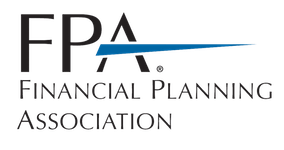The transition to early retirement brings many financial considerations, chief among them the cost of health insurance. Thankfully, the Affordable Care Act’s Premium Tax Credit (PTC) offers a lifeline for early retirees navigating the gap between retirement and Medicare eligibility at age 65. This helpful guide delves into the PTC, highlighting strategic income planning to secure discounted health insurance premiums before Medicare kicks in.
What is the Premium Tax Credit?
The PTC provides a refundable tax credit to individuals and families with household incomes between 100% and 400% of the federal poverty level, with the goal of making health insurance more affordable. For those on the lower end of this income spectrum, the government can provide this credit in advance, directly reducing the cost of premiums for plans purchased through the Health Insurance Marketplace.
Strategic Income Adjustments for PTC Eligibility
Leveraging the PTC doesn’t necessarily mean living on a tight budget. Different income sources are taxed differently, allowing for strategic financial planning. It’s crucial to distinguish between household income and disposable income, as the former significantly impacts PTC eligibility. Through careful planning, it’s possible to adjust your income sources to align with PTC thresholds without diminishing your quality of life.
For example, these income types are exempt from PTC calculations:
- Balanced Gains and Losses in Taxable Accounts: Selling assets to realize equal gains and losses results in no taxable event.
- Loan Proceeds: Loans, whether from a life insurance policy, securities, or a home equity line of credit (HELOC), do not count as income.
- Roth IRA Distributions and Cash Withdrawals: These are not considered income for PTC purposes.
A Practical Example: PTC Planning for Early Retirement
Consider a 60-year-old couple from Maricopa County, Arizona, who are non-tobacco users with no dependent children, and navigating their early retirement. They aim to maintain a comfortable lifestyle with an annual living expense of $80,000 while also qualifying for the PTC. Their financial assets include a severance package, cash reserves, an IRA, and a taxable brokerage account. Here’s how they could strategically manage their resources to cover their annual expense:
- $30,000 from their brokerage account, with a portion being taxable due to capital gains.
- $10,000 from their severance pay/cash reserves, with no tax implications since the severance was taxed in the prior year.
- $40,000 from their IRA, fully taxable as income.
This strategy allows them to meet their annual living expenses while maintaining a household income that qualifies for the PTC, significantly reducing their health insurance premiums.
Beyond the Basics: Fine-Tuning Your Retirement and Health Insurance Strategy
This example underscores the flexibility and strategic opportunities available to early retirees aiming to optimize their health insurance costs through the PTC. Beyond managing assets and income, families might also consider reinvesting or reallocating funds for greater efficiency and potential tax benefits.
We believe an enjoyable early retirement without the burden of excessive health insurance costs is achievable. Through informed decision-making and strategic financial planning that takes into account the nuances of your personal financial landscape, you can navigate the intricacies of the Premium Tax Credit, helping ensure a smooth transition into this new chapter of life. The path to a secure retirement is best walked with careful planning and possibly the guidance of a financial advisor to tailor a strategy that best suits your needs.









